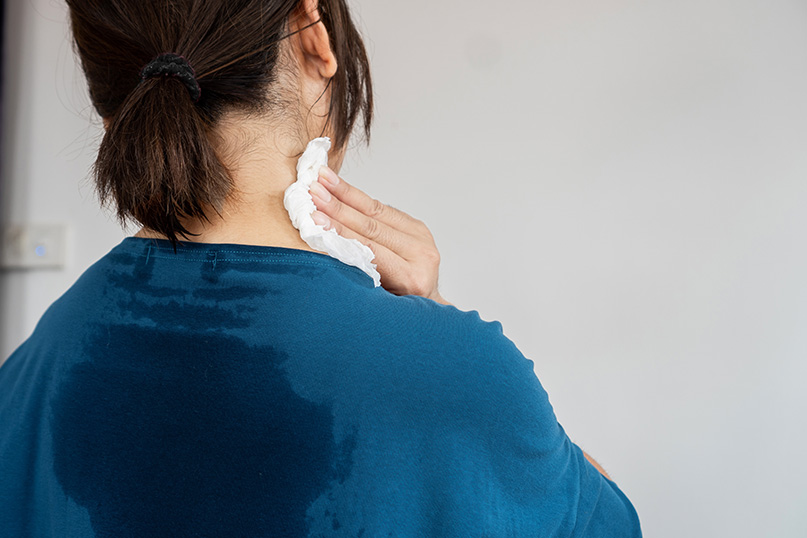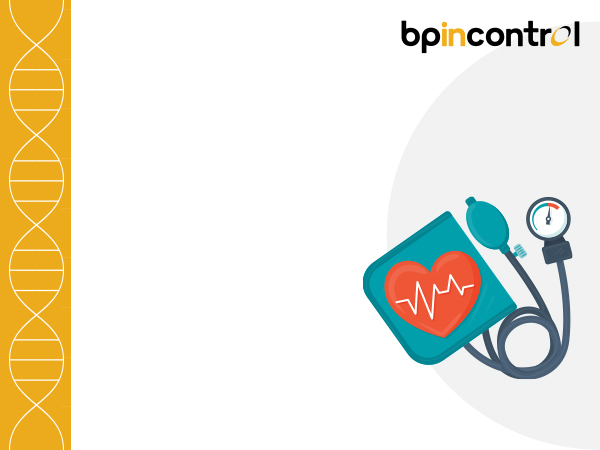Decoding the Relationship between Low BP and Sweating

Table of Contents
If your blood pressure is too low, the vital organs are deprived of essential nutrients and oxygen. This can result in excessive sweating, rapid breathing and a weak pulse. This condition needs immediate medical attention and can cause heart problems or stroke if neglected. However, there are also fairly benign conditions that can cause excessive sweating. Here, we will understand the connection between low blood pressure and sweating and its typical signs and symptoms.
Understanding Low Blood Pressure (Hypotension)
The force with which blood pushes against the artery walls is termed as blood pressure. Each time your heart beats, it pumps blood into the arteries. Your blood pressure is highest when your heart beats, pumping the blood. This is called systolic pressure. When your heart is at rest, between beats, your blood pressure falls. This is called diastolic pressure. When the reading shows as 90/60 mm Hg, the condition is referred to as a state of low blood pressure.
The first number is the systolic measure (measurement during heart beats), and the second is the diastolic measure (measurement when the heart rests in-between beats).
What are the Causes of Sweating?
Excess sweating occurs due to one of the many reasons like:
- Hyperthyroidism
- Diabetes
- Anxiety
- Drug overdose
- Emotions and stress
- Pregnancy
- Hyperhidrosis
Figuring Out The Link Between Low Blood Pressure and Sweating
Any reading lower than 90/60 gives rise to excessive sweating and low blood pressure. This is also referred to as hypotension and can make you feel dizzy. Hypotension sweating is a sign of low blood pressure and may also indicate an underlying condition that should be treated. Having a low BP is common in both young and adults. However, it is more common as you age and may show no symptoms.
People complaining of hypotension sweating start losing excess water through sweat resulting in lower blood volume, which is what causes blood pressure to drop. This is the core link between sweating and low BP.
Symptoms of Low Blood Pressure and Excessive Sweating
Does low bp cause sweating? As high BP doesn’t cause sweating, sweating is a typical sign of a low BP. Generally, our body tries to stabilize the lowering of blood pressure by speeding up our heart rate or constricting blood vessels to narrow them. Symptoms show when the body fails to balance the pressure of its own. A few of the signs of hypotension include:
- Fatigue, tiredness and dizziness
- Nausea and depression
- Loss of consciousness and blurred vision
- Fast breathing
- Confusion or trouble concentrating
- Too slow or too fast heart rate
- Low urine output
Low Blood Pressure and Excessive Sweating: Unveiling the Triggers
Certain conditions may give rise to low blood pressure including:
- Central nervous system diseases: Conditions like Parkinsons can affect how the nervous system controls blood pressure.
- Low blood volume: Severe injuries often cause rapid blood loss, resulting in low blood pressure.
- Medical emergencies: Emergency conditions like heart attacks, stroke, collapsed lungs etc. can cause low bp and sweating.
- Endocrine disorders: When blood sugar is very high, it causes sugar to leak into the urine. The sugar in the urine also drains water with it, resulting in dehydration. When significant, eventually dehydration can result in low blood pressure.
- Pregnancy: an increased demand for blood from the fetus can cause low blood pressure in pregnant women
How to Manage Low Blood Pressure and Sweating in Daily Life
Low blood pressure and sweating management depends on its underlying reason. Based on the cause, your doctor may prescribe you lifestyle changes, medication or both.
- Lifestyle changes
Staying hydrated, taking care of emotional health, modifying eating habits and exercising are a few of the lifestyle changes one can follow to keep BP in control.
- Medical treatment
This includes but is not limited to:
- Medication for underlying conditions like diabetes, heart disease etc.
- Medication for raised BP (more likely in cases of severe orthostatic hypotension)
- Shock-induced hypotension for emergency conditions where low BP needs immediate attention.
Conclusion
As sweating lowers blood pressure, it is crucial that you keep yourself hydrated to keep your BP in control. Often high BP can also make you feel tired draining your energy levels. However, for elderly persons keeping an eye on BP can help them stay active and free from diseases.
FAQs
1. How does dehydration relate to low blood pressure and sweating?
Often heavy exercises or long games render us dehydrated. Low water intake can decrease your blood volume, causing low blood pressure and sweating.
2. What role does the autonomic nervous system play in low blood pressure and sweating?
The autonomic nervous system regulates involuntary physiologic processes including heart rate, blood pressure, respiration, digestion etc.
3. Can low blood pressure and sweating be a sign of a serious medical condition?
A low BP refers to a condition when vital organs like the heart and brain are not getting sufficient amounts of oxygen. This, in turn, results in serious medical conditions like stroke and heart attack.
Disclaimer
The information contained in this article is to educate, spread awareness in relation to hypertension and other diseases to the public at large. The contents of this article are created and developed by BPinControl.in through its authors, which has necessary, authorisations, license, approvals, permits etc to allow usage of this articles on The Website. The views and opinions expressed in this article are views, opinions of the respective authors and are independently endorsed by doctors. Although great care has been taken in compiling and checking the information in this article, The Website shall not be responsible, or in any way liable for any errors, omissions or inaccuracies in this article whether arising from negligence or otherwise, or for any consequences arising therefrom. The content of this article is not a substitute for any medical advice. The Website shall not be held responsible or liable for any consequence arising out of reliance on the information provided in the article.


Comments (0)
No comments found.Add your comment